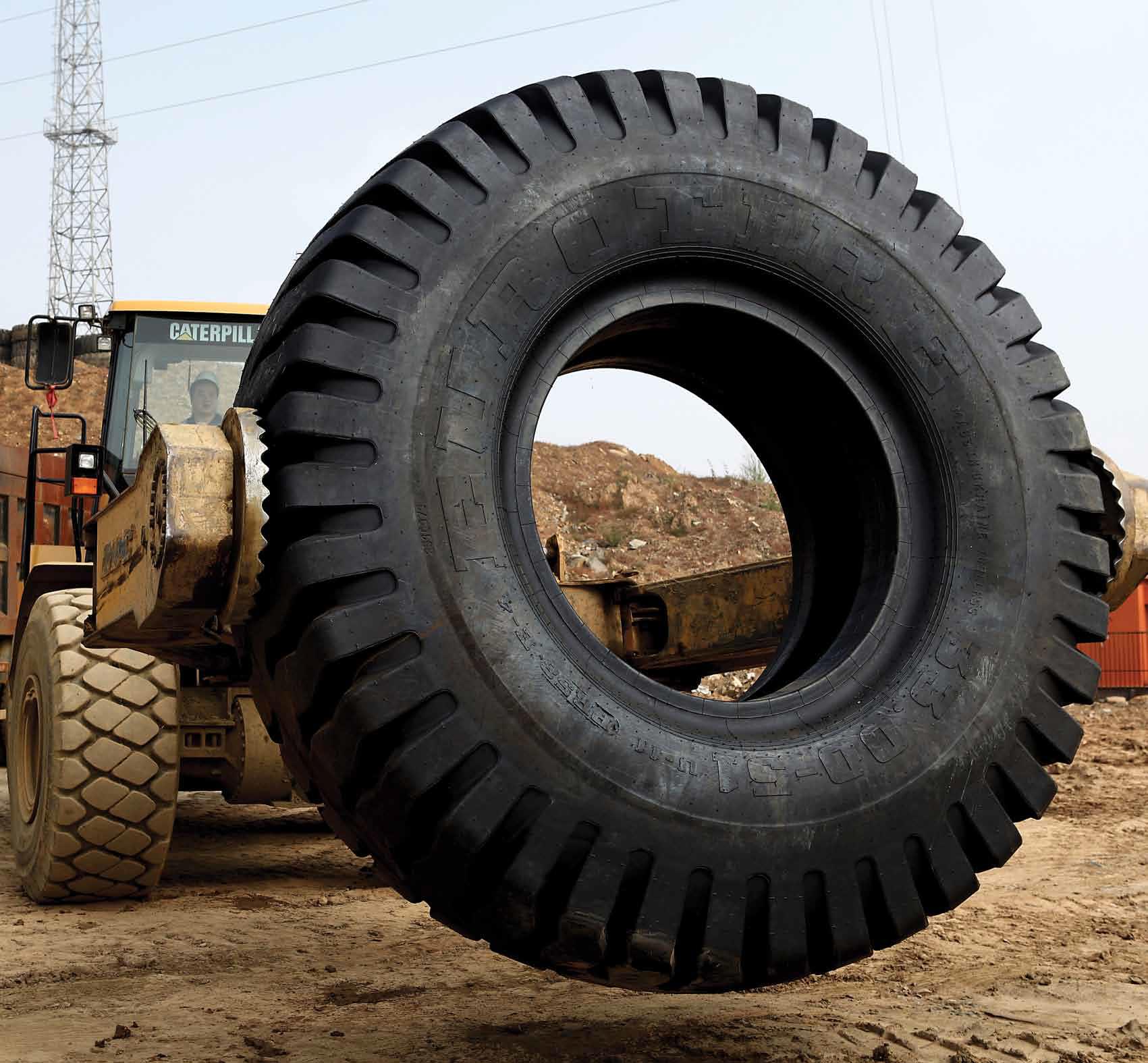
A relative newcomer to the tire business, Eurotire is making room for itself in a crowded marketplace.
Imagine the situation: a new name in off-road tires for the mining industry is trying to break into a market dominated by three of the biggest brands in the world. At the other end of the spectrum, customers are losing faith in unknown brands thanks to masses of inferior Chinese tires flooding the market and failing to live up to expectation.
This was the scenario facing Eurotire after what was once a state-run research facility in the Soviet Union was privatized in 2004. “Since the 1970s,” explains commercial director Mike Bloor, “our Ukraine factory existed to produce short runs of prototype OTR tires. After the Soviet Union broke up, the Ukraine became a separate country in 1992 and a decade later embarked on a large scale privatization program. As the mining industry tends to deal in US dollars and as many of Eurotire’s shareholders live in North America, the commercial business is registered and run under the rules of the United States.”
Since then, the Ukraine factory, which specializes in bias tires, has undergone a $70 million expansion and modernization program. In 2007, a further $300 million was invested in a state-of-the-art radial tire plant in Romania, providing Eurotire with plant capacities of 14,000 and 22,000 tires per annum respectively. In all, it has a workforce of 2,500 directly and indirectly manning a chain of nine warehouses and offices in ten different countries of the world.
But with the biggest names in global mining being cosseted by the biggest names in tire manufacturing, where was Eurotire to sell its output? “After what happened during the tire shortage,” says Bloor, “there was an understandable resistance for buyers to trust brands they didn’t know. So, two years ago, rather than chasing the bulk of sales going to well-established mines in long-standing, mature regions, we adopted a new business strategy and turned to the fringes, to growth areas where new mining ventures were being developed.”
Of course this meant the most marginal and isolated places in the world, dealing with mining companies and locations that only industry insiders had ever heard of. “These mines had exactly the same need for good tires and plenty of back-up from suppliers,” says Bloor, “but had to rely on getting whatever they could get their hands on from intermediaries of one kind or another.”
It seems that despite tires being a crucial part of the mining process and one which can have a considerable impact on operating costs, only a few mine operators are truly savvy about the whole question of tire selection and management. While the big mining houses with deep pockets got all the attention they could ever want from the big tire manufacturers, those on the margins got nothing in the way of help and support.
“There are no operating manuals,” says chief operating officer Meir Dubinsky, “on how to run a tire management program while mining at an altitude of 5,500 meters or how best to change tires. Buying through a dealer gets absolutely nothing in the way of support. Those guys are completely on their own.”
So for the past two years, while obviously not ignoring easier-to-come-by business, Eurotire has been doing its own pioneering work and creating contact with mines in the badlands of Russia, India or Kazakhstan. In this time, they have become convinced of the correctness of their strategy. At the moment, they have little or no competition as the rest of the tire suppliers battle it out with the current big names in the industry. But over the coming decades, as the giants run out of resources, it will be the isolated mines in Russia and Africa that take up the slack and become the industry’s mainstream mines.
Doing business this way is not easy. If a customer needs a tire today, it’s too late. Even those customers with the greatest leverage have to plan a year ahead of their needs. When it can take three or four months to deliver a tire to some isolated spot in the Sayan Mountains, forward selling is even more critical.
Unlike the automobile market, where younger motorists aren’t even aware that cars once ran on bias tires, the Tire Industry Association estimates that around 40 percent of all off-road tires are still bias. This of course means that the majority of OTR tires are now radial but in order to justify the extra cost of a radial tire, mines must have roads good enough to travel at higher speeds.
“We find that there is enormous difference in the mix of tires a country will use,” says Bloor. “Mature markets such as North America or Australia have better infrastructure and probably use 95 percent radials. But these tires would be totally ineffective in less well developed areas. There, the roads are so poor that trucks can never get anywhere near the speeds that radials are capable of and could never justify the cost.”
Eurotire’s range in both bias and radial covers haul trucks of around 50 tonne to vehicles with a 220 tonne capacity. One of the greatest feathers in Eurotire’s cap is the strategic supplier status it has with Caterpillar which, although not the only OEM it supplies, is certainly the most well known. “Caterpillar is in the same boat as us,” says Bloor. “They know that it’s the growth mining zones where future business comes from and they appreciate the effort we are putting into opening up these markets.”
Even Caterpillar, though, steers clear of certain tire selection decisions. Over 90 tonne capacity, its vehicles are sold without tires, leaving the decision to the end user and therefore opening up opportunities to sell the Eurotire message. “Being the relatively new kid on the block,” says Bloor, “we have to try harder to break through the purchasing inertia and get mines to try something new. We do this through a package we call EuroCare through which we can show that rather than simply selling tires, we want to add value to every part of the process.”
Eurotire claims that no other supplier offers the same range of support services that make up EuroCare nor are they able to tailor the support in the same way. “As well as the tires themselves,” says Dubinsky, “we provide everything—but everything—end users will ever need to get the best life and value from their tires: tools, service programs, training, our own line of repair products—everything from a single source and brought to the customer at a reasonable price.”
Not only does Eurotire promise not to try and sell anything the customer doesn’t need, it offers the software programs that will prove that everything it does supply will add value. Perhaps the most impressive element is a remote tire monitoring system that enables Eurotire to keep track of every tire equipped with the necessary telemetry components. With this, if there is a problem with running tire pressures, the Eurotire system will send an alert via text or email in real time to allow mine managers the chance to make appropriate service interventions.
“What we want to achieve,” says Bloor, “is to make tire management data meaningful and show the end users how to take their maintenance to the next level and with that get much more value and life from their purchases.”
Written by Alan Swaby; research by Marcus Lewis
DOWNLOAD
 Eurotire-EMEA-Sept12-Bro-s.pdf
Eurotire-EMEA-Sept12-Bro-s.pdf













